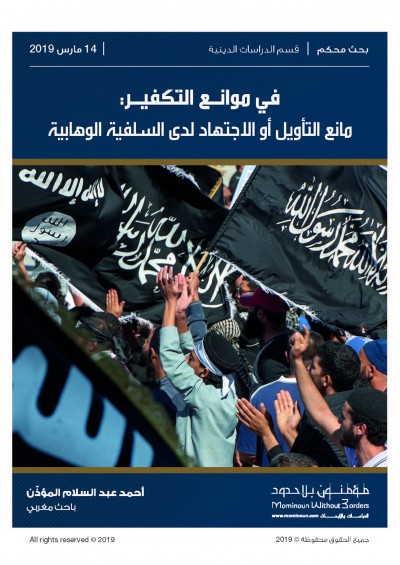Geographic information systems and remote sensing methods for assessing and monitoring land degradation in the Sahel region [Ressource électronique] : the case of Southern Mauritania / Amadou Khoudiedji Thiam
نوع المادة : نصوصف:1 vol. (490 p.)الموضوع:تصنيف DDC:
نصوصف:1 vol. (490 p.)الموضوع:تصنيف DDC:- 551.35209661 23E
- 550
| نوع المادة | المكتبة الحالية | رقم الطلب | رقم النسخة | حالة | تاريخ الإستحقاق | الباركود | |
|---|---|---|---|---|---|---|---|
|
|
Bibliothèque centrale Intranet | INTRANET (إستعراض الرف(يفتح أدناه)) | 1 | المتاح | PDF61648901 |
Browsing Bibliothèque centrale shelves, Shelving location: Intranet إغلاق مستعرض الرف(يخفي مستعرض الرف)
Doctor of philosophy : Geography : Faculty of Clark University, Worcester : 1997
Bibliogr. p. 446-490
Land degradation in semi-arid regions is the process by which the land loses part of its biological productivity as a result of long term decreasing rainfall trends, and more importantly, inadequate land use practices. It is a major concern for rural communities and governments in the Sahel Region affected by recurrent droughts since the 1970s. The application area o f this study is southern Mauritania characterized by a northern Sahelian climate and a semi-arid ecosystem. Since the 1970s, die region has been under environmental stress due to the combined impacts of recurrent droughts and anthropogenic pressure. Although it represents only 12.5% of the country's land area, it concentrates nearly 37% of the population, 90% of whom practice substance agriculture and/or livestock keeping. The livestock population which has geometrically increased as a result of mass migrations from other parts of die country represents nearly 70% of the national herd. The degradation process that affects the life supporting base (soils, forage and forest resources) is a direct result of agricultural encroachment, overgrazing, fuelwood and building material collection. Such a situation needs to be assessed and monitored with a powerful data integration and analysis system in order to support environmental resources management decision making with accurate information. This study is an Investigation on the potential of Geographic Information Systems (GIS) and Remote Sensing digital image processing methods to exhibit the pattern of land degradation prone areas from geographical data and satellite imagery. GIS data integration and analysis techniques are applied to physical and socio-economic data for the cartographic and statistical characterization of land degradation prone areas. Statistical analyses are carried out on tabular and image data while spatial modelling procedures such as surface interpolation, distance analysis and various overlay operations are specifically performed on images to determine the spatial extent of the degradation processes. The digital image processing techniques used include spectral vegetation indices (VO grouped into sloped-based (e.g., NDVO, distance-based (e.g., PVI) and orthogonal (e.g., GVO models. These Vis are used in order to assess their ability to distinguish sparse green vegetation cover from its background soil. Land cover change and drought impact assessment was carried out using several approaches. Land cover change detection techniques such as image differencing, regression differencing, image ratio, classification comparisons, change vector analysis, and Principal Components Analysis (PCA) are applied to Landsat MSS data. Drought impact areas are assessed from NOAA/AVHRR 1.1 km images with Time Series Analysis (TSA) and the Vegetation Condition Index (VCI) . The GIS applications showed that the natural processes of degradation such as wind and water erosion are slight to moderate. The anthropogenic forces were found to be the major factors due to injurious land use practices such as agricultural encroachment, building and fuelwood material collection and overgrazing. The quality of the numerical and graphical outputs demonstrate the ability of the GIS procedures to handle the complex process of land degradation even with the data scarcity and quality problems of semi-arid developing countries such as Mauritania. The functional equivalence test generally showed a high correlation between Vis o f the same group and between VI groups. The sensitivity test, geared towards the selection of the most appropriate Vis, indicated that the distance-based Vis are generally more sensitive to the contrast between green vegetation versus the soil substratum than the slope-based models. The first group was dominated by MSAVI,, MSAVI: and WDVI while the slope-based Vis were headed by SBAVI, NRVI and NDVT. Land cover change detection techniques such as the differencing procedures and image ratio were found inefficient as they do not distinguish between true change and natural variability. At the other end, classification comparisons and PCA were found to be good qualitative and quantitative measurements of change. They provide useful information on where and when resource protection and rehabilitation schemes must be implemented. The TSA and VCI allowed the delimitation of drought impact areas over the four growing seasons of 1990 to 1993. The maps showed that more than two-thirds of the test area were under persistent drought conditions. In this respect, the procedure proves to be excellent means of timely alerting decision makers on areas where human groups and livestock may face famine threat due to crop failure and low forage production. Reproduced with permission of the copyright owner. Further reproduction prohibited without permission. The holistic evaluation of land degradation was performed with a "weight o f evidence" approach that combined iocal and expert knowledge. The local knowledge represents the knowledge local people have on the process of land degradation while the expert knowledge corresponds to the use o f Fuzzy Sets and Dempster-Shafer theory to scale and integrate a set of 13 driving forces and indicators. The results of the integration showed land degradation at varying degrees throughout the test site. They provide useful information to decision makers for the planning of resource protection and rehabilitation programs. Finally, the VCI, NDVI, and Belief in degradation images and rainfall were used to determine the areas under land degradation risk along with the human and/or natural causes of degradation.
لا توجد تعليقات على هذا العنوان.







